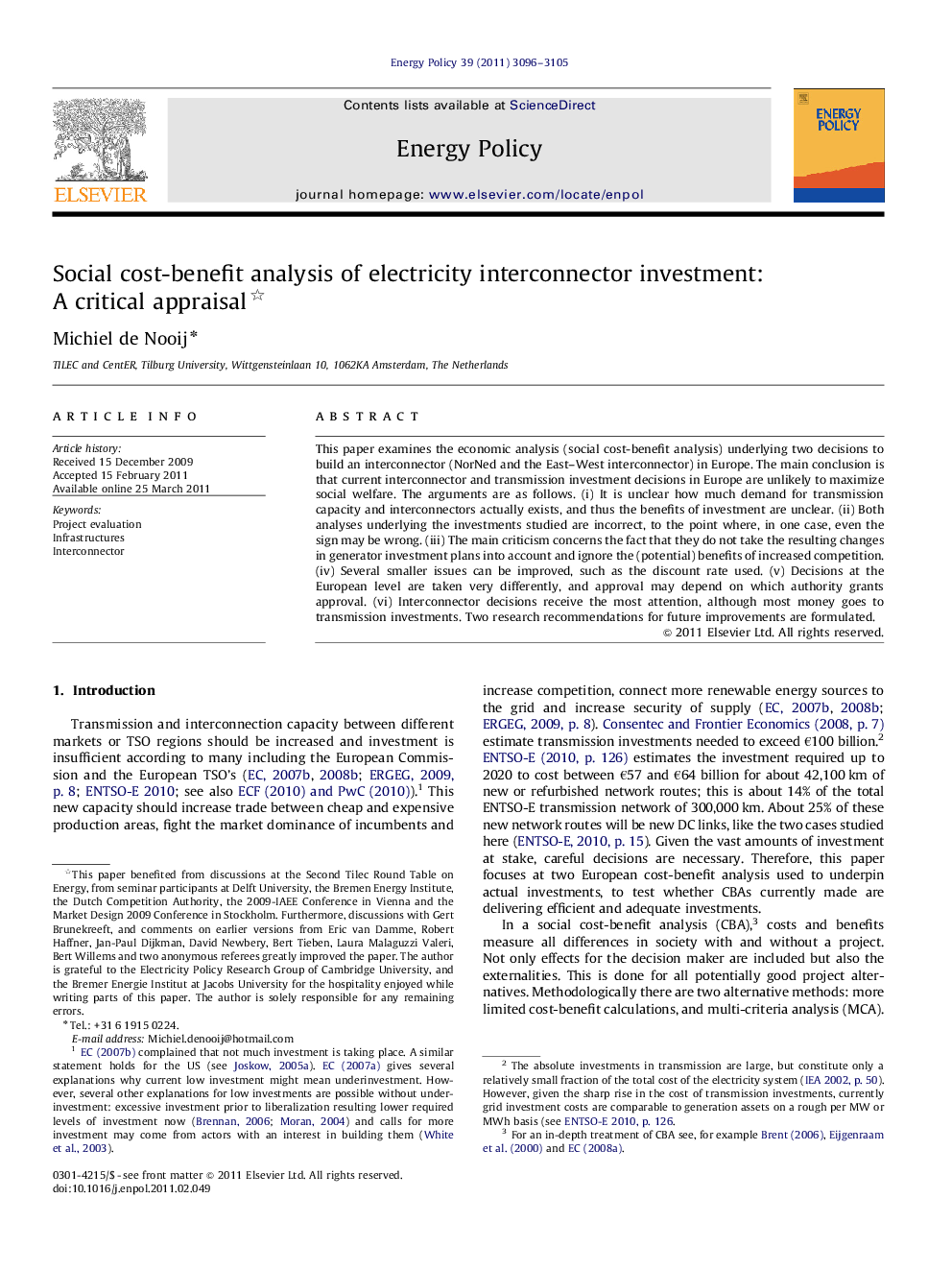| Article ID | Journal | Published Year | Pages | File Type |
|---|---|---|---|---|
| 994896 | Energy Policy | 2011 | 10 Pages |
This paper examines the economic analysis (social cost-benefit analysis) underlying two decisions to build an interconnector (NorNed and the East–West interconnector) in Europe. The main conclusion is that current interconnector and transmission investment decisions in Europe are unlikely to maximize social welfare. The arguments are as follows. (i) It is unclear how much demand for transmission capacity and interconnectors actually exists, and thus the benefits of investment are unclear. (ii) Both analyses underlying the investments studied are incorrect, to the point where, in one case, even the sign may be wrong. (iii) The main criticism concerns the fact that they do not take the resulting changes in generator investment plans into account and ignore the (potential) benefits of increased competition. (iv) Several smaller issues can be improved, such as the discount rate used. (v) Decisions at the European level are taken very differently, and approval may depend on which authority grants approval. (vi) Interconnector decisions receive the most attention, although most money goes to transmission investments. Two research recommendations for future improvements are formulated.
► The cost-benefit analysis of two European interconnector investments are analyzed. ► The main conclusion is that current decisions are unlikely to maximize welfare. ► There are several problems, and as a result in one case, even the sign may be wrong. ► Main criticism is that responses of generators to new interconnectors are ignored. ► Two research recommendations for future improvements are formulated.
